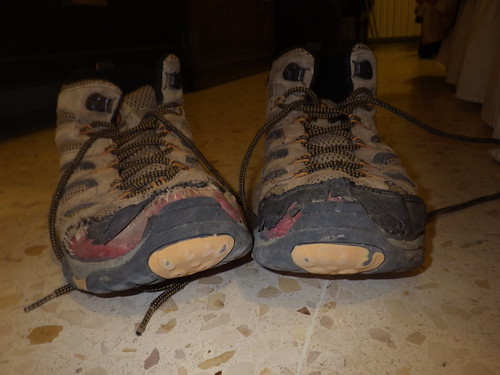I have (as usual?) been remiss in my blogging duties here, and have allowed the August issue of Journal of Field Archaeology (40.4) to come out without blogging about my colleague, Kyle Knabb (et al.)'s, paper in the June issue (40.3). That can't stand, of course.
His paper (long title in the citation below) presents some of the results of a survey he conducted in 2009 in Wadi al-Fayḍ (transcribed al-Feidh in the paper), near Petra in southern Jordan. The focus is primarily on the settlement patterns of this wadi system during the Iron Age and Roman periods. He argues that, during the Iron Age, Wadi al-Fayḍ was settled by people who subsisted on a combination of farming and herding, in contrast to the plateau, where the evidence suggests a "loosely organized agricultural state" (375). During the Roman period, evidence for settlement sites disappears, suggesting that Wadi al-Fayḍ essentially became the agricultural hinterland of more concentrated settlement in and around Petra.
The really interesting part of the paper, though, is that I was, in fact, a member of the Wadi Feid Expedition (WFE) survey team way back in 2009. Actually, now that I think about it, the WFE was the first archaeology project I was involved with in Jordan (followed very shortly by the excavation at Khirbat al-Nuḥās that same year). Should you read this paper, there is actually a photo of me rappelling down a waterfall on page 372 (why yes, I'm wearing a previous pair of Merrell Moabs, although you can't really tell). If you're reading it for the photos of me, though, I should point out that the previously linked National Geographic site is a rather better source of those.
Incidentally, Kyle and I (with a few others) are currently preparing something of a sequel to this paper, which will focus on the settlement patterns in Wadi al-Fayḍ during the Middle and Late Islamic periods. Stay tuned for more.
![]() Knabb, Kyle A., Najjar, Mohammad., & Levy, Thomas E. (2015). Characterizing the rural landscape during the Iron Age and Roman period (ca. 1200 B.C.–A.D. 400): An intensive survey of Wadi al-Feidh, southern Jordan. Journal of Field Archaeology, 40 (3), 365-380 DOI: 10.1179/2042458214Y.0000000004
Knabb, Kyle A., Najjar, Mohammad., & Levy, Thomas E. (2015). Characterizing the rural landscape during the Iron Age and Roman period (ca. 1200 B.C.–A.D. 400): An intensive survey of Wadi al-Feidh, southern Jordan. Journal of Field Archaeology, 40 (3), 365-380 DOI: 10.1179/2042458214Y.0000000004

